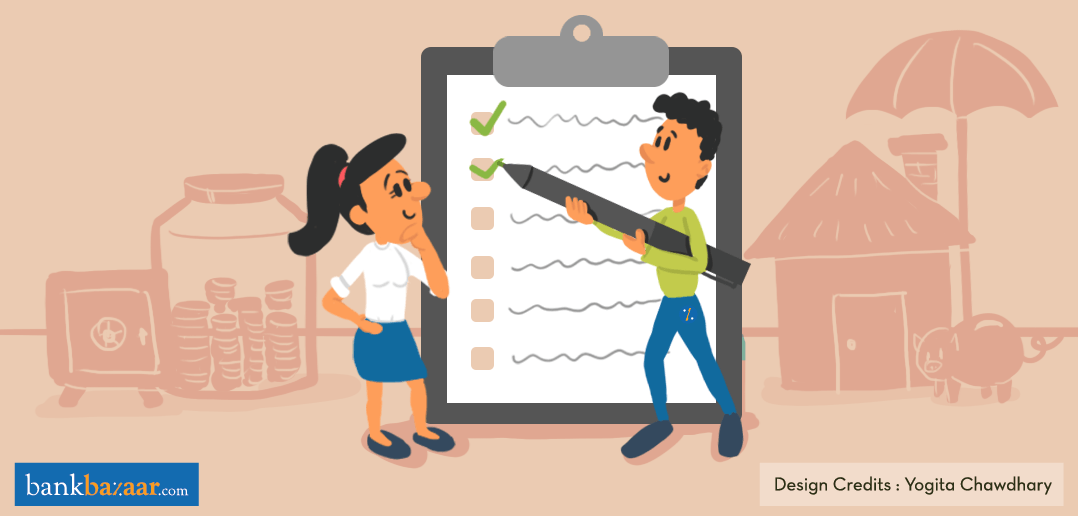Wondering what it takes to make the ideal personal finance checklist? As unique as everyone’s finance needs are, here are 5 things you should have in your checklist.

Are you the kind that makes financial resolutions at the beginning of every year but somehow loses interest mid-way? You’re not alone. Many of us aspire to be better personal finance managers as we grow, but it’s easier said than done. You can always sit and jot down the things you believe will help you get your finances on track, but how sure are you that your checklist is fool-proof?
Additional Reading: 6 Common Budgeting Blunders And How To Fix Them
All our personal needs are unique, so there’s no one-size-fits-all list that will work for everyone. However, there are a few things that are absolutely must-haves if you want your financial plan to rock. Here are the 5 things you must include:
Saved Vs Spent Ratio
At the end of every month, try and calculate how much of your income has gone towards meeting your expenses and how much has been channelised towards your saving goals. Doing this will help you identify if you start going overboard with your spends. Though this may sound like a simple tip, it’s quite hard to follow and demands your dedication and focus.
Additional Reading: How Budgeting Can Transform Your Financial Life
EMI Calculations
When we talk about expenses, there are typically 2 types. The first is the money you spend on having a good time – entertainment, food, travel, drinks, bills, etc; these can be categorised as your living expenses. The second type consists of payments that are debts or investments in nature – Credit Card bills, Personal Loan EMIs, Home Loan EMIs, etc. Now the second category can be viewed as credit expenses or in some cases, investment expenses. Hence, it is important that you track these separately every month. This will also give you clarity on how credit-worthy you are.
Psst… click here to check your FREE Credit Score.
Additional Reading: 8 Ways To Save More Money Every Month
Cash Flow Check
This is an aspect of financial planning that is often ignored. However, it is easy to employ. To start working towards it, simply ask yourself, “Where does my income go?” – your answers will help you illustrate your cash flow. For instance, let’s say you maintain 3 bank accounts – one’s your salary account, the second one is a savings account, and the third one is purely for travel/investment goals. Your first step towards creating a cash flow system can be by labeling these accounts. By simply giving these a name, you’ll be able to create some structure and organisation in the way you manage your money – in short, you’ll know what’s going where without having to really scan through your detailed bank statement every month.
The ‘Want Or Need?’ Check
If you’re looking to get your finances to a better shape than ever before, you’ll want to prioritise your needs above your wants. While deciding what qualifies as a want and what qualifies as a need is subjective at times, there are a few universal needs that outweigh other requirements. For instance, expenses such as buying a car for commute or a paying for good internet connection can qualify as needs in today’s fast-paced world. On the other hand, buying an expensive pair of shoes that took your breath away when you saw it at a store or on an e-commerce website is surely a ‘want’, unless you’ve been walking around barefoot until now (we hope not!).
Realistic Periodic Goals
It’s always easy to say you’re going to save a certain sum of money by the end of the year. Following up with the plan, however, can be quite tricky – especially if you don’t track your progress. Instead of fixing just an annual savings goal, break it down so that you can track your growth every now and then. It can be weekly, monthly, quarterly or even half-yearly, but don’t forget to have periodic goals as part of your financial checklist. Not only does this give you focus, it also helps you stay agile in case your financial plan has gone off course.